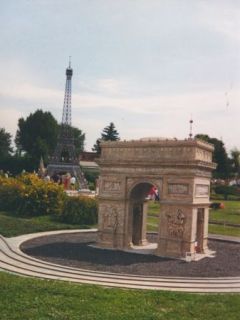
A veritable world in miniature, the Minimundus theme park just outside the Austrian town of Klagenfurt attracts thousands of tourists from around the world, many of them from Slovenia. Its reproductions of landmark buildings are popular among both children and adults. But few visitors realize that the man referred to as the Father of Minimundus was Slovenian.
Friderik Jerina was born in 1906 near Kamnik, at the foothills of the Alps north of Ljubljana. He had initially wanted to become and electrician, but he soon developed a passion for the arts.
He created a number of oil paintings, mostly landscapes. He also restored older works of art; bringing new life to old roadside shrines was his specialty. His attention to detail was just as useful for his hobby of modelmaking. According to researcher Primož Hieng, Jerina enjoyed making scale replicas of everything from buildings to working models of steam engines.
But World War II changed everything for Jerina. His wife was German, and after the war, most Germans were expelled from Yugoslavia. The Jerinas fled across the border to Austria. They spent four years in a camp for displaced persons near Lienz in Tyrol, where Friderik continued to create works of art.
In 1949, the family finally moved into a home of their own in the small Carinthian village of Treffen. Shortly thereafter, Jerina met with a team from a children’s charity known as Rettet das Kind. The organizers were planning an educational amusement park, and Jerina’s talents for modeling turned out to be a perfect match for the charity. Together they came up with the idea of miniature structures made from authentic building materials.
Jerina ultimately created more than twenty such miniatures for the new park. Other modelers would eventually contribute their own creations to Minimundus, but Jerina’s work helped to define the style of the miniatures and put the park on the map. According to historian Magdalena Starman, “Without Friderik Jerina, there would have been no Minimundus.”
Friderik Jerina died in 1996, but his son Matthäus Jerina has carried on his father legacy and contributed his own models to Minimundus, a park that has become one of Carinthia’s premier tourist attractions.

































































